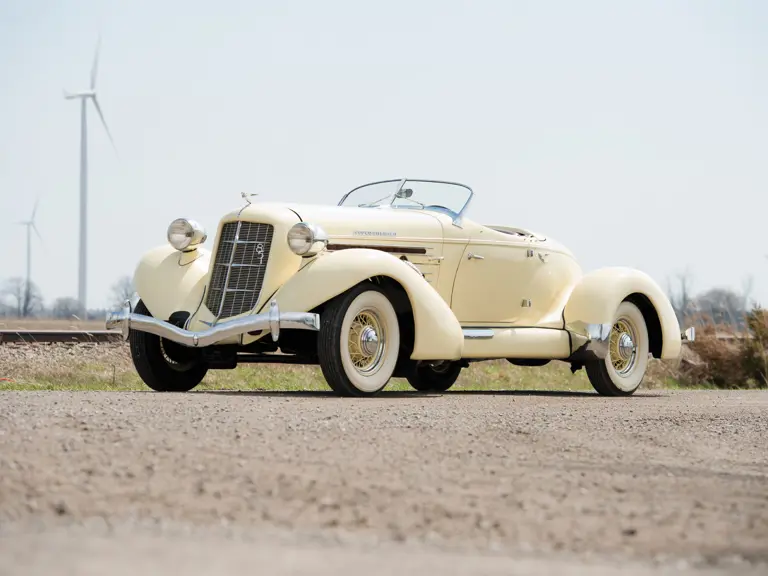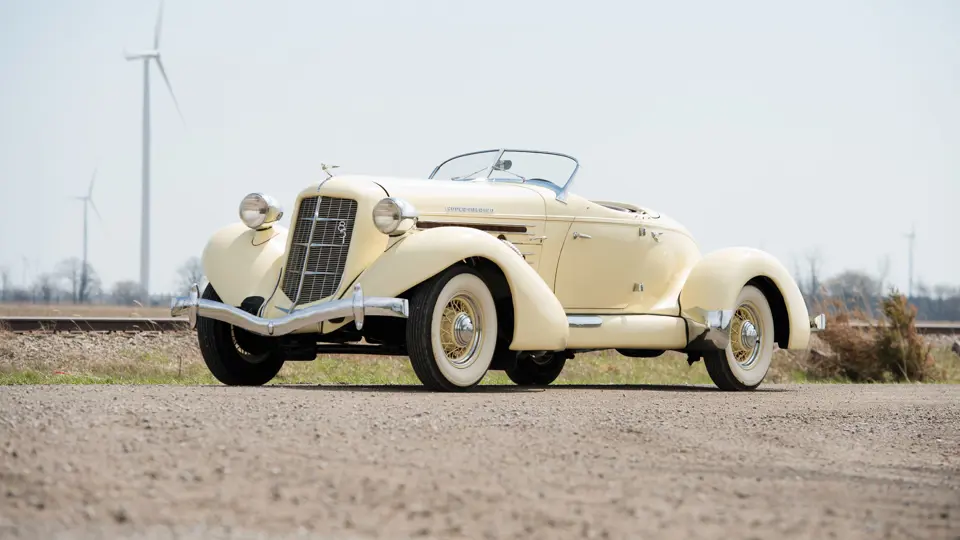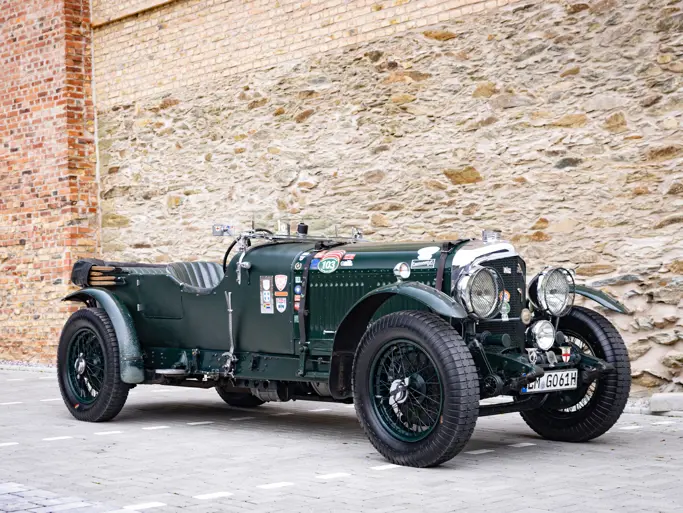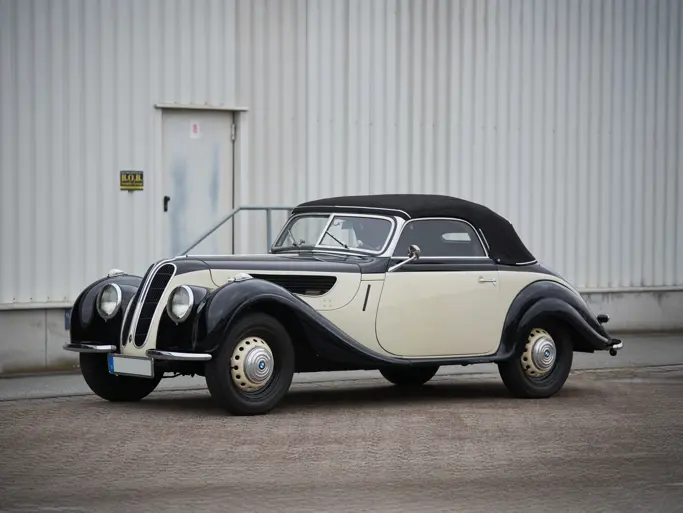Chassis no. 32724 E
Engine no. GH 3630
As with many Classic Era manufacturers, Auburn Automobile Company produced its finest automobiles during its last years of existence. Great things came out of dire straits, in this case the final Alan Leamy-designed model of 1934, in which the company had invested heavily. The model sold better than the 1933s, but was nonetheless a sales failure, and was halted after just a few short months of production. Designer Gordon Buehrig was called upon to give the 1934 design a fresh, saleable new look, on a shoestring budget.
Buehrig focused on the front end of the Auburn design, giving it a new grille, hood line, and headlights. Copying the famous Duesenberg SJ, Auburn’s “big brother,” a Schwitzer-Cummins centrifugal supercharger was to be made available on the top-of-the-line 280-cid, 150-hp inline eight-cylinder Auburns for 1935, complete with the iconic external exhaust, the calling card of supercharged Cord Corporation products. Supercharged models came standard with the trusted, durable Columbia two-speed “Dual Ratio” rear axle, which provided both low gearing for fast acceleration and a higher final drive ratio for improved top-end speed.
The final trick Buehrig pulled out of his hat was a dramatic new body style that would stimulate traffic into Auburn showrooms. Recalling the famous Leamy-designed speedsters of 1931-34, and, more pointedly, recognizing that fifty of those bodies remained unused in storage, Auburn’s Harold Ames designed a new speedster that would be just the thing. Buehrig based his design on a Duesenberg speedster he had created for Weymann of Indianapolis. The first fifty speedsters produced in 1935 would utilize the top, doors, windshield, and cowl of the leftover bodies, but with a new tail and modifications around the firewall to blend with the new 1935 front end. To modernize and further streamline the design, Buehrig added flowing, aggressive pontoon-style fenders.
The bodies were extensively reworked and reshaped to the new Buehrig design, and then mounted to chassis at the Auburn factory in Connersville, Indiana. After these bodies ran out, with demand for speedsters still intact, a number of all-new bodies were produced during the remainder of the 1935-36 run.
Chassis no. 32724 E, offered here, is one of the fifty early cars, and appears in historian Randy Ema’s list of original and authentic 1935-36 Auburn speedsters, published in the Auburn Cord Duesenberg Club Newsletter in 1996. It was formerly owned by H.L. Potts, and later by Fred Buehring, both of Texas. While in Mr. Buehring’s ownership, the Auburn, restored in the popular factory color Cigarette Cream, was awarded a CCCA First Prize winner with 99 points, as noted by the plaque on the body that it wears to this day.
The current owner’s father purchased the speedster for his collection in 1980, and it has remained in the family ever since. Recently, in preparation for sale, it was returned to running order. Its paint and interior show light wear and stretching, respectively, but have cleaned up nicely, and would still be presentable for driving use. 1935-36 Auburns are well-known to be some of the best driving cars of their period, with a remarkably modern feel and long-legged agility, thanks to the “Dual Ratio” rear axle. Alternatively, the car would be the best possible beginning for a show-quality restoration. Indeed, restored 1935-36 speedsters have won Best of Show at the ACD Club National Reunion several times over the past years.
Gordon Buehrig’s “last generation” speedster may have failed to save Auburn Automobile Company, but it did succeed in ensuring, more than any other model, that the company’s products would be remembered. To this day, it is the sleek “boattail” that many think of when envisioning an Auburn, and to most, it is one of the finest, ultimate American Full Classics. Offered here is the rare opportunity to acquire one which has been long unseen, out of nearly 35 years of ACD Club member ownership, and to return it to the roads.



 | Auburn, Indiana
| Auburn, Indiana


